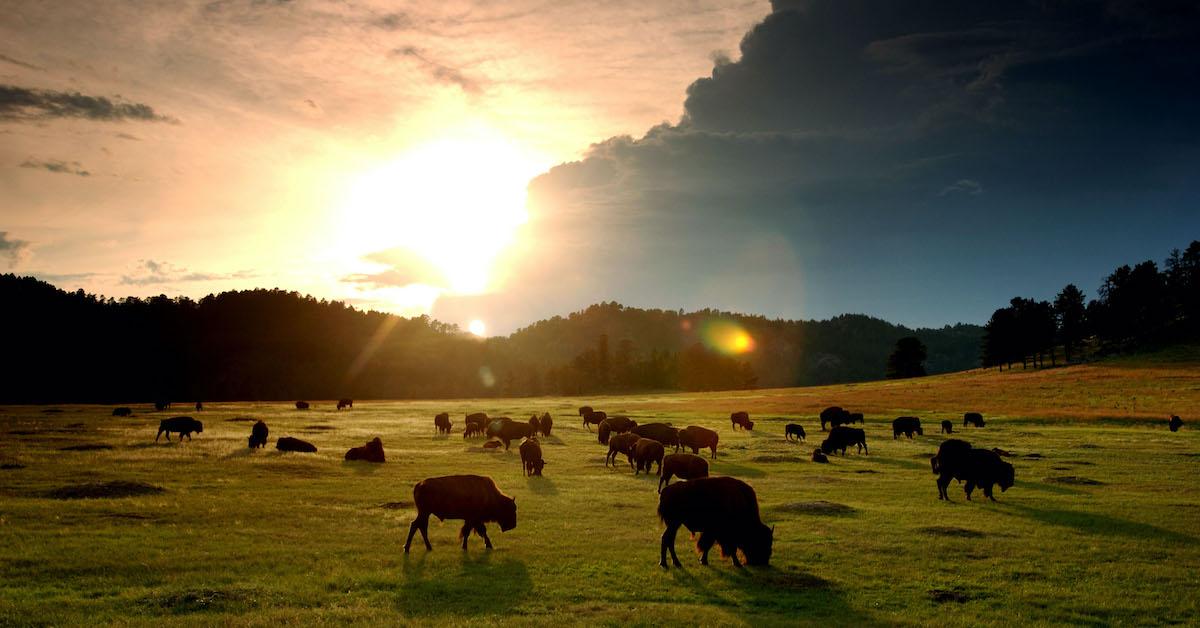Rosebud: A Legacy of Resilience on the Plains
Rosebud: A Legacy of Resilience on the Plains

The wind whispers through the tallgrass, carrying with it the echoes of centuries past. Here, on the sprawling expanse of the Rosebud Indian Reservation, a rich tapestry of history unfolds, woven with threads of resilience, resistance, and a deep connection to the land. It’s a story of hardship and triumph, of cultural preservation and a fight for self-determination.
From the Buffalo’s Back to the Treaty Table
Related Articles: Rosebud: A Legacy of Resilience on the Plains
- Uncover the Enchanting World of the Navajo Indian Tribe
- Discover the Seneca Indian Reservation: Unveiling History, Culture, and Native Heritage
- Discover the Enigmatic World of Native American Tribes in West Virginia
- Unveiling the Enchanting Flathead Indian Reservation: A Journey of Discovery
- Unveiling the History: Discover the Number of Indian Tribes Relocated to Oklahoma
The Rosebud Sioux, also known as the Sicangu Lakota, have called this land home for generations. Their ancestors, roaming the Great Plains, lived in harmony with the buffalo, their lives intertwined with the rhythms of nature. But the arrival of European settlers brought a wave of change, disrupting their way of life and pushing them onto reservations.
The Rosebud Reservation, established in 1889, was a far cry from the vast territories they once roamed. The treaty that carved out this land, though intended to bring peace, ultimately fueled resentment and conflict. The government’s promises of self-sufficiency and protection proved hollow, leaving the Rosebud Sioux struggling to survive in a land stripped of its natural resources.
The Ghost Dance and Wounded Knee
The late 19th century saw a surge of religious revivalism among the Lakota, a desperate attempt to reclaim their lost way of life. The Ghost Dance movement, a spiritual revival that promised the return of the buffalo and the expulsion of white settlers, swept across the Plains.
However, the government, fearful of the movement’s growing influence, responded with force. The massacre at Wounded Knee in 1890, where hundreds of unarmed Lakota men, women, and children were slaughtered, stands as a stark reminder of the government’s brutal tactics and the tragic consequences of their policies.
The Struggle for Self-Determination
Despite the hardships they faced, the Rosebud Sioux never gave up their fight for self-determination. They established tribal governments, fought for educational rights, and worked tirelessly to preserve their language and cultural traditions.
The 20th century saw the rise of tribal activism, with the Rosebud Sioux playing a pivotal role in the fight for Native American rights. They challenged discriminatory policies, advocated for economic development, and fought for environmental protection.

A Land of Resilience: The Rosebud Today
Today, the Rosebud Reservation faces a multitude of challenges, including poverty, unemployment, and a lack of access to essential services. But the spirit of resilience that has defined the Rosebud Sioux for centuries continues to burn bright.
The reservation is home to a vibrant community of artists, musicians, and educators who are working to preserve their heritage and inspire future generations. They are building schools, creating economic opportunities, and advocating for environmental justice.
Beyond the Headlines: A Deeper Look
The Rosebud Reservation is not just a place on a map; it’s a living, breathing community with a rich history and a vibrant culture. It’s a place where tradition meets modernity, where the past informs the present, and where the spirit of the Lakota people continues to thrive.

Beyond the headlines about poverty and hardship, there’s a story of resilience, of cultural preservation, and of a people determined to shape their own destiny. It’s a story worth telling, a story that reminds us of the enduring strength of the human spirit, and the power of community.
FAQ: Rosebud Indian Reservation History
Q: When was the Rosebud Indian Reservation established?
A: The Rosebud Indian Reservation was established in 1889.
Q: What tribe lives on the Rosebud Reservation?

A: The Rosebud Sioux Tribe, also known as the Sicangu Lakota, live on the reservation.
Q: What is the significance of Wounded Knee in Rosebud history?
A: The massacre at Wounded Knee in 1890 was a tragic event that deeply impacted the Rosebud Sioux and the Lakota people as a whole.
Q: What are some of the challenges faced by the Rosebud Sioux today?
A: The Rosebud Sioux face challenges such as poverty, unemployment, and a lack of access to essential services.
Q: What are some of the efforts being made to improve the lives of the Rosebud Sioux?
A: The Rosebud Sioux Tribe is working to improve the lives of its people through education, economic development, and cultural preservation.
Q: What can I do to learn more about the Rosebud Sioux?
A: You can learn more about the Rosebud Sioux by visiting their website, reading books and articles about their history and culture, and supporting organizations that work to help them.
A Legacy of Resilience
The Rosebud Reservation is more than just a place; it’s a testament to the enduring strength of the human spirit. It’s a reminder that even in the face of adversity, hope and resilience can prevail. The Rosebud Sioux, through their unwavering spirit and their commitment to their heritage, continue to write a story of resilience and determination that inspires us all. Their journey is a powerful reminder that the fight for justice and equality is a continuous struggle, one that requires constant vigilance and unwavering commitment.

Closure
Thus, we hope this article has provided valuable insights into Rosebud: A Legacy of Resilience on the Plains. We hope you find this article informative and beneficial. See you in our next article!